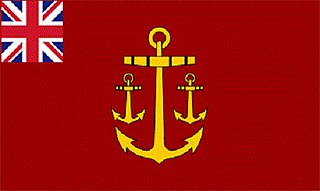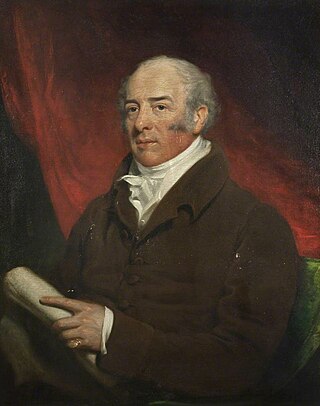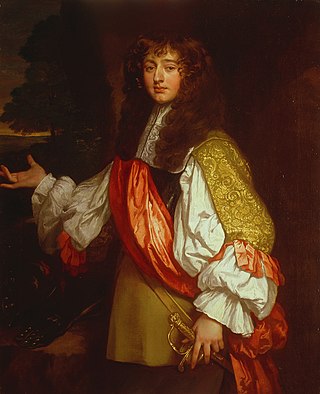
The First Sea Lord, officially known as the First Sea Lord and Chief of Naval Staff (1SL/CNS) is a statutory position in the British Armed Forces, usually held by an admiral. As the highest-ranking officer to serve in the Royal Navy, the chief is the principal military advisor on matters pertaining to the navy and a deputy to the Secretary of State for Defence. In a separate capacity, the CNS is a member of the Chiefs of Staff Committee and, thereby, a military advisor to the National Security Council, the prime minister and the monarch. The First Sea Lord is typically the highest-ranking officer on active duty of the Royal Navy unless the Chief of the Defence Staff is a naval officer. Admiral Ben Key was appointed First Sea Lord in November 2021.

The Navy Board was the commission responsible for the day-to-day civil administration of the Royal Navy between 1546 and 1832. The board was headquartered within the Navy Office.

Admiral of the Fleet Sir George Rooke was an English naval officer. As a junior officer he saw action at the Battle of Solebay and again at the Battle of Schooneveld during the Third Anglo-Dutch War. As a captain, he conveyed Prince William of Orange to England and took part in the Battle of Bantry Bay during the Williamite War in Ireland.

Admiral of the Fleet Edward Russell, 1st Earl of Orford, PC was a Royal Navy officer and politician. After serving as a junior officer at the Battle of Solebay during the Third Anglo-Dutch War, he served as a captain in the Mediterranean Sea in operations against the Barbary pirates.

Josiah Burchett, of Hampstead, Middlesex, was a British naval administrator and Whig politician, who sat in the English and British House of Commons between 1705 and 1741. He was Secretary of the Admiralty in England, a position he held for almost fifty years from 26 September 1694 to 14 October 1742. In addition to his administrative duties, he was the author of the first general history of the Royal Navy, published in 1720 and based on official Admiralty records.

Rear Admiral Sir Thomas Troubridge, 1st Baronet was a Royal Navy officer. As a junior officer he saw action at the Battle of Sadras in February 1782 during the American Revolutionary War and the Battle of Trincomalee in September 1782 during the Anglo-French War. He commanded the third-rate Culloden at the Battle of Cape St Vincent in February 1797 during the French Revolutionary Wars. He went on to be First Naval Lord and then served as Commander-in-Chief, East Indies, during the Napoleonic Wars.

The Lieutenant of the Admiralty is a now honorary office generally held by a senior retired Royal Navy admiral. He is the official deputy to the Vice-Admiral of the United Kingdom. He is appointed by the Sovereign on the nomination of the First Sea Lord.

Vice Admiral George Darby was an officer of the British Royal Navy. He commanded HMS Norwich at the capture of Martinique in 1762 during the Seven Years' War. He went on to command the Western Squadron during the American Revolutionary War and later in that war served as First Naval Lord when he commanded the force that relieved Gibraltar from its siege by the Spanish in April 1781.

Vice Admiral Sir William Johnstone Hope, GCB was a prominent and controversial British Royal Navy officer and politician in late eighteenth and early nineteenth century Britain, whose career experienced fleet actions, disputes with royalty, party politics and entry to both Russian and British orders of chivalry. A popular officer, Hope served with Nelson, Duncan and Lord Keith through several campaigns, making connections which enabled him to secure a lengthy political career after his retirement from the Royal Navy in 1804 due to ill-health. After 26 years in Parliament, Hope was largely inactive and instead served as a Lord of the Admiralty and commissioner of Greenwich Naval Hospital. Hope died in 1832 after 55 years of naval and political service and was buried in the family plot in Scotland.
Admiral of the White Hugh Pigot, of Wychwood Forest in Oxfordshire, was a Royal Navy officer. He commanded York at the reduction of Louisbourg in June 1758 and commanded Royal William at the capture of Quebec in September 1759 during the Seven Years' War. He went on to serve as Commander-in-Chief of the Leeward Islands Station during the American Revolutionary War and then became First Naval Lord. He also served as a Member of Parliament.

Admiral of the Fleet Sir William Rowley KB was a Royal Navy officer. He distinguished himself by his determination as commander of the vanguard at the Battle of Toulon in February 1744 during the War of the Austrian Succession. He went on to be Commander-in-Chief of the Mediterranean Fleet in August 1744 and successfully kept the Spanish and French fleets out of the Mediterranean area but was relieved of his command following criticism of his decision as presiding officer at a court-martial.

Captain Henry Priestman was a Royal Navy officer and politician who sat in the House of Commons from 1695 to 1698.

Admiral Sir Robert Harland, 1st Baronet was a Royal Navy officer. He commanded HMS Tilbury at the Second Battle of Cape Finisterre in October 1747 during the War of the Austrian Succession and commanded HMS Princess Louisa at the Battle of Lagos in August 1759 during the Seven Years' War. He went on to be Commander-in-Chief of the East Indies Station and then First Naval Lord.

Admiral John Markham, was a Royal Navy officer. As a junior officer he served in the American Revolutionary War. He commanded the third-rate HMS Hannibal in the action of 10 April 1795 and then the third-rate HMS Centaur, capturing a French frigate squadron in the action of 18 June 1799, during the French Revolutionary Wars. He went on to be a Lord Commissioner of the Admiralty and First Naval Lord under Earl St Vincent. He also served as MP for Portsmouth.

Rear Admiral Sir John Chicheley was a Royal Navy officer. He commanded a squadron at the Battle of Schooneveld in June 1673 and the Battle of Texel in August 1673 during the Franco-Dutch War. He went on to be Commissioner of the Ordnance and then Senior Naval Lord. He was also a Member of Parliament.
Admiral Robert Man (1721–1783) was a Royal Navy officer. He commanded the third-rate HMS Lancaster at the siege of Louisbourg in June 1758 during the French and Indian War. He went on to become commander-in-chief of the Leeward Islands Station, then Commander-in-Chief, Mediterranean Fleet and finally First Naval Lord.

During the early 17th century, England's relative naval power deteriorated; in the course of the rest of the 17th century, the office of the Admiralty and Marine Affairs steered the Navy's transition from a semi-amateur Navy Royal fighting in conjunction with private vessels into a fully professional institution, a Royal Navy. Its financial provisions were gradually regularised, it came to rely on dedicated warships only, and it developed a professional officer corps with a defined career structure, superseding an earlier mix of sailors and socially prominent former soldiers.

The Department of the Accountant-General of the Navy also known as Accountant-General's Department was the department charged by the British Government with reviewing all naval estimates, conducting naval audits and processing payments from 1829 to 1932.

The Lord High Admirals Council was a series of councils appointed to advise and assist the Lord High Admiral of England and then later of the United Kingdom of Great Britain and Ireland in the direction of Naval Affairs also known as Council of the Lord High Admiral when the Board of Admiralty was not in commission the first series took place between 1702-1708 and second and final series of councils took place from 1827-1828.

The Victualling Department originally known as the Department of the Comptroller of Victualling and Transport Services or the Victualling Office, also known as the Department of the Director of Victualling was the British Admiralty department responsible for civil administration of Victualling Yards and the storing and supply of Naval Victuals for the Royal Navy from 1832 to 1964.



















